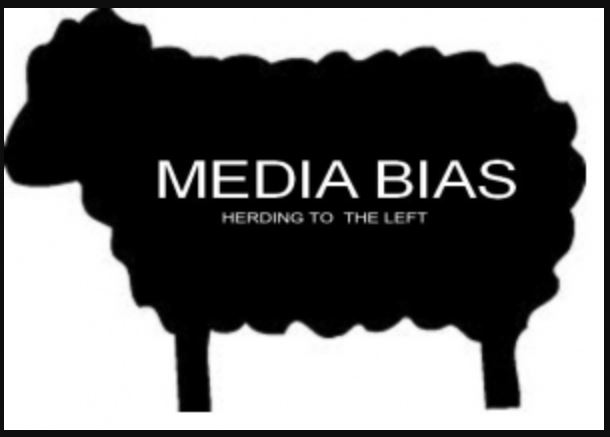The motivation for this article comes from several people on social media requesting us to evaluate the prevalent biases in Indian media. To evaluate this question would require us to first be objective and look at the criticism of the media through the lens of legitimacy and to measure whether the media in its assessment is driven by objective reporting or being based on their inherent biases.
As a consequence of our innate understanding, we believe that while media as an ‘institution’ continues to remain unbiased, it is those moving parts of this institution, including some reporters, journalists, news anchors and columnists where there is a possibility of intended or inadvertent bias. We understand this is bound to happen given that “Op-Eds” are the the new way of sourcing information. The authors strongly support “Op-eds” as they are instrumental in explaining complex subjects to general people. However, op-eds have the power to shape, influence and preserve public opinion; and with great power comes great responsibility. Consequently, both written and non-written forms of opinions should be treated by these institutions with high restraint. Unfortunately, we have observed diminishing sense of responsibility by certain columnists who often resort to incorrect methodology, unreliable statistics and subterfuge facts to push for a narrative that fits their larger scheme of things, including political allegiances and personal biases. Since opinion editorials are also contributed by those outside the institution, there is scope to address the proclivity to some extent.
Beyond the “op-eds” there’s a problem associated with most journalists who tend to push for selective causes to suit their political agenda. Arun Shourie who has in the past multiple times cited biased Marxian influences in Indian media, unfortunately, has become a participant of incorrect methodology, statistics and unreliable facts group as he pushes his agenda on Rafale.
We believe we’ve also forgotten how most TV channels barring few decided to have a blackout when the Niira Radia tapes were exposed. This blackout was orchestrated by journalists who across media houses protect and look after each other’s interests. This in itself is the problem with Indian Media: A strong nexus that protects each other and enables them to grow despite the biases that are prevalent within this ecosystem. With the power to reach the minds of a billion people and little sense of responsibility or accountability, the ecosystem has tried to behave like a closely guarded club that resembles the elite clubs of the whites during the British India era.
This club does not allow many Indians, despite their hard-working nature, well-formed methodological research and impeccable academic credentials to take their research to the larger public. As a result, sound analysis based on rigorous academic training remains limited to academicians while popular sentiment and the agenda is arrested by this closed club altogether.
Today, almost all 24×7 news channels have mastered the art of blending real-time reportage with real time opinions. One of India’s television channels famous for caricature journalism is known to sign contracts with opinion makers and expects them to comment on all issues, irrespective of their competency, as long as they are willing to vociferously defend the same. To be fair, while this trend is discernible in electronic media, ugly biases of print media often go unnoticed. Every freelancer has struggled to get her pieces placed in leading broadsheets, even when the content of her piece may be far superior than that of a ‘resident columnist’. For a nation whose Prime Minister conquered nepotism, its media is still left wanting.
Any essay on biases in Indian media will be deficient without mentioning the inherent bias, often justified as “editorial choice” that creeps in when ‘selecting’ content fit to be aired. While we appreciate the role of variables such as TRP, quality of content, production viability, it defeats our wisdom, why story of encounter of two innocent students in Islampur, West Bengal did not make it to Prime Time? Newsrooms that were on fire when Junaid was lynched, are shamefully silent when Sadhus are murdered in Aligarh. It is hard to explain this ‘editorial choice’ with the tyranny of distance, since the much discussed controversy of Jinnah poster too happened in Aligarh. When was the last time we discussed Tuktuki from West Bengal or forceful conversions in remote villages of Odisha? Why has India not read “Bengal Files”?
Ascent of a common man like Narendra Modi to the Office of Prime Minister of world’s largest democracy should bulldoze all deep-seated notions that have nourished the “club” for decades. Time is up for our biases, preferences, leanings, spins, viewpoints, inclinations and everything that stopped you from being the espoused fourth pillar of Indian democracy, our forefathers envisaged.
All in all, despite media being unaligned and independent, certain top journalists have created their own club-house and they conveniently pull the media narrative in the country. These journalists sit in Khan Market with their rosy glasses of wine and comment on India despite not having travelled to real India which starts from just 50 Kms from Delhi. They’re completely disconnected from the reality of India and they continue to force their idea of India onto the ordinary people of the country; but what they don’t realize is that the sun did set on the white only clubs, so why’d their club be any different?
Authors:
Gunja Kapoor is a policy analyst, and political observer. She tweets @gunjakapoor
Karan Bhasin is a political economist by training and has diversified research interests in the field of economics. He tweets @karanbhasin95.
